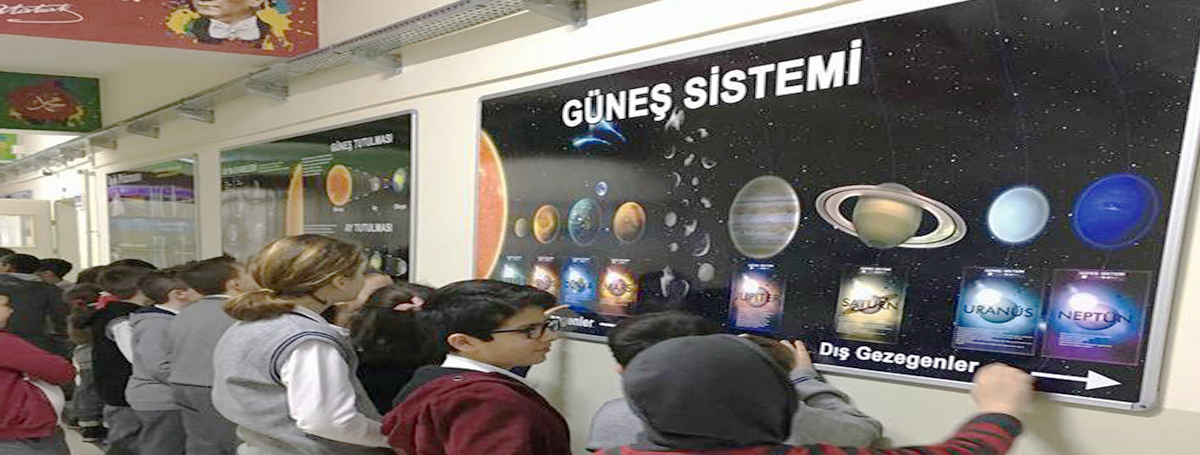
Throughout the Ottoman Empire, a key goal of education was to raise 'excellent Muslims'. Thus there was a need for Islamic scholars, which was sustained through Islamic Faith Schools, called Madrasa.In 1913, the Medresetü-l Eimmeti vel Hutaba (School of ministers and preachers Medresetü-l Vaazin were integrated to form the tangible origins of today's Imam Hatip high schools
In 1924, the Tevhid-i Tedrisat (Law of Marriage of Educational Guideline was passed, replacing the existing, mainly sectarian academic system with a nonreligious, centralist and nationalist education one. The brand-new law brought all universities under the control of the Ministry of National Education. A Faculty of Theology at the Darülfünun (Istanbul University), unique schools for training imams and hatips (ministers and preachers) were opened by the brand-new Ministry of National Education. Nevertheless, in 1930 İmam Hatip schools were closed and 1933 the Professors of Divinity was eliminated.
In contrast to the exclusively secularist nature of the education policy of the Republican People's Party (CHP) religious education was reinstated in 1948. This included the establishment of a Professors of Theology at the University of Ankara in 1949. First steps for the establishment of Imam Hatip schools began in 1951 under the Democrat Celebration federal government, which established 7 unique secondary schools (Imam Hatip Okulları). In addition, in 1959 Islamic Institutes were opened for graduates of Imam Hatip schools.
Following the coup d'etat in 1960, Imam Hatip schools came across the hazard of closure. Following the go back to civilian politics and the intro of the new constitution in 1961, graduates of Imam Hatip schools might only enrol in university programmes if they had passed courses offered at secular schools. Throughout the premiership of Süleyman Demirel nevertheless, graduates of Imam Hatip schools were offered access to university without such requirements. The 1971 Turkish coup d'état introduced two essential reforms: first of all junior high Imam Hatip schools were abolished, and in 1973 Imam Hatip schools were renamed as Imam Hatip high schools. Under the subsequent National Education Basic Law, Imam Hatip schools were specified as vocational schools, where trainees were to be trained as preachers and ministers or gotten ready for higher education.
Imam Hatip schools grew slowly in the beginning, but their numbers expanded quickly to 334 during the 1970s. The union government of 1974, developed by Additional hints the CHP and the MSP (National Salvation Party), dedicated to resume junior high schools and offering the right of entry to university through assessment. 230 brand-new Imam Hatip high schools were opened in a period of nearly four years. Throughout the 1974-75 school year the number of students taking care of the Imam Hatip high schools grew to 48,895. This number subsequently grew to 200,300 by 1980-81. In addition, women gained the right of entry to Imam Hatip high schools in 1976. The expansion of Imam Hatip high schools is frequently pointed out as the effect of the National Redemption Celebration's membership of a variety of coalitions with Nationalist Front federal governments.
Circumstance given that 1980
The coup d'etat of September 12, 1980 is a crucial turning point in the history of Turkey and also for the history of Ä°mam-Hatip high schools. Under military governance, graduates of Imam Hatip high schools acquired the right of entry to all university departments. In 1985, two brand-new Imam Hatip high schools opened, one in Tunceli, despite of the so-called ethnic structure of the area, and the other in Beykoz as an Anatolian Imam Hatip High School, with the goal of contributing to the education of children of households who work abroad. Although the number of Imam Hatip high schools had actually not increased considering that, the variety of students participating in Imam Hatip high schools has actually increased by 45%. This is partially due to the improvement in the quality of Imam Hatip high schools and the education offered at such schools.
During the education year of 1973-74, the total number of Imam Hatip trainees was 34,570; in 1997 this number had actually greatly increased to reach 511,502. Along with this massive boost in popularity, the variety of schools likewise increased. The number of Imam Hatip junior high schools reached 601 and senior high schools 402. The boost in both student and school numbers can be credited to aspects including the commitment of people to religious beliefs, dorm room centers, scholarships, the admittance of women and an increase in demand for religious education.
Research recommends that between the years of 1993 and 2000, potential students registered at Imam Hatip high schools mainly to get spiritual tutoring alongside a more general education.In addition, research study reveals enrolment at Imam Hatip high schools was based solely on the student's choice. The 3rd suggested consider the rise in popularity of Imam Hatip schools is the admission of female students in 1976. By 1998, practically 100,000 women participated in Imam Hatip high schools, making up practically half of all students. This statistic is particularly exposing because ladies are not qualified to become either priests or ministers.
However, the introduction of eight years of compulsory education in 1997 has seen an unexpected decrease in the appeal of Imam Hatip schools. In 1999, the reclassification of Imam Hatip schools as "trade schools" suggested that, although more alternatives had actually been provided to graduates, achieving places at prominent university courses ended up being more difficult.By requiring that all 8 mandatory years of schooling be spent under the very same primary-school roof, middle schools were eliminated. Kids could not go into employment schools (one of them the Imam Hatip school) till the ninth grade (rather than the sixth, as before).